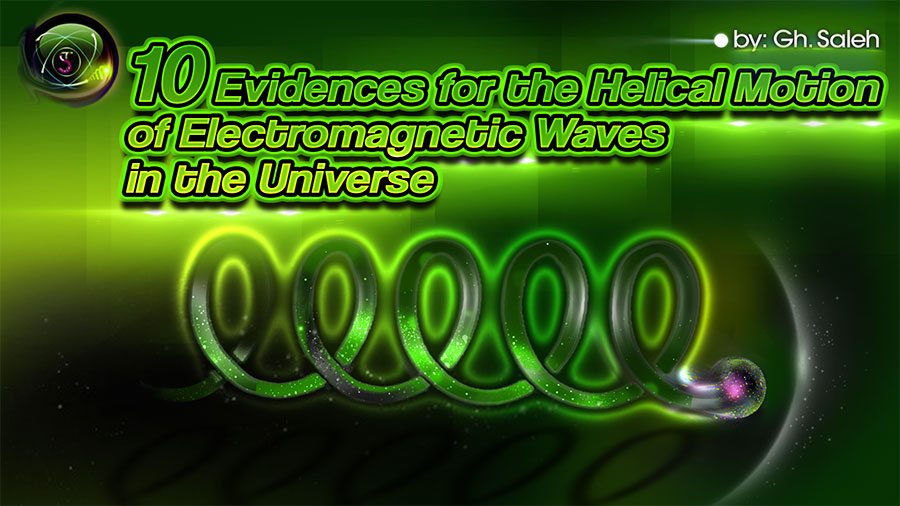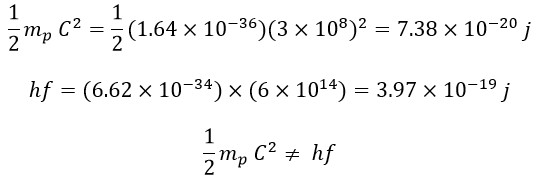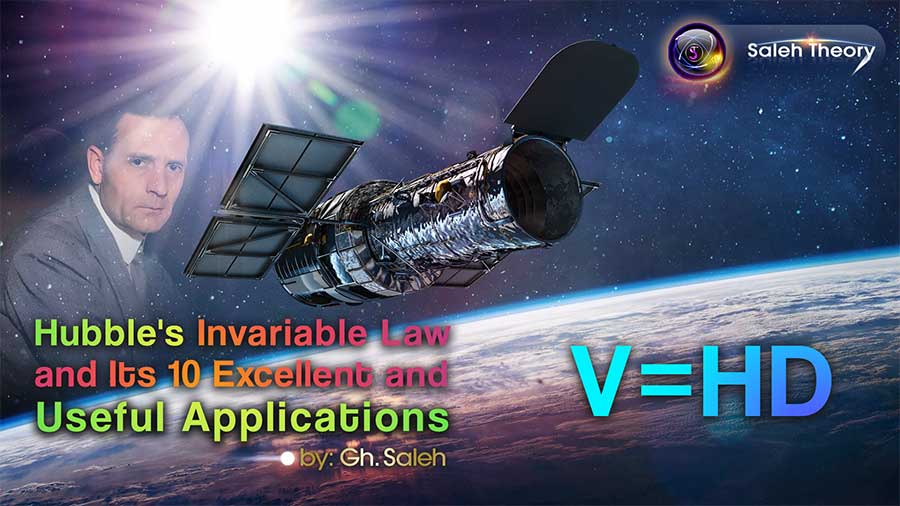
10 Evidences for the Helical Motion of Electromagnetic Waves in the Universe
Considering a galaxy like the Milky Way, it rotates on its axis and revolves around a central point in the universe. The universe is rotating on its axis. Generally speaking, one could say that everything from photons, electrons, and atoms to moons, planets, galaxies, and beyond is in rotational motion both around themselves and around their central points. What is abundantly clear and must be accepted without doubt in our universe is the rotational movement of particles and celestial bodies around themselves and their central points in their orbits. In the following, we will explain 10 evidences for the helical motion of Electromagnetic waves (photons) in the Universe.
1. Young's Double-Slit Experiment
In Thomas Young's Double-Slit Experiment, interference patterns are observed, and photon motion is considered as a wave. On the other hand, an Electron whose rest-mass has been proven to be constant also has an interference pattern in Young’s double-slit experiment. Therefore, it seems that the existence of interference patterns is related to the motion of the particle, not its nature. Therefore, a photon can be considered as a particle with constant mass that has helical motion.
2. Single-Slit Diffraction Experiment
Single-slit diffraction is a wave phenomenon of light that occurs when coherent light (such as laser light) passes through a narrow slit and forms a pattern on a screen. This phenomenon is strong evidence that light behaves as a wave or has helical motion.
3. Discrepancy Between Energy Calculated via Planck's Law and Photon Kinetic Energy
As we mentioned in previous articles, photons have constant rest-mass (mp) and velocity, and their kinetic energy equation can be written as follows:

In this equation, we calculate the energy value for the photon's velocity being equal to C:

On the other hand, according to Planck's equation, the energy of electromagnetic waves (including the visible light spectrum) is as follows:

If the used velocity C were correct, the kinetic energy of the photon would be the same as the energy obtained from Planck's experimental equation. Although we all know that this relationship doesn't hold, for instance, let's try it for green light with a frequency of 600 THz:

Therefore, the velocity C cannot be the true velocity of a photon, and the total velocity must be different. Therefore, the motion of the photon cannot be direct, and this energy difference can be explained by considering helical motion.
4. Wave-Particle Duality of Light
Wave-particle duality is the concept that photons (particles of light) exhibit both particle-like and wave-like behavior. One of the most important indications of this duality is the observation of interference patterns in experiments such as single-slit or double-slit diffraction. In other words, in the world of science, photons are attributed with both particle and wave properties. However, a photon has only one nature and cannot be a particle one moment and a wave the next. If we consider helical motion for a photon, we have a particle that moves like a wave, thus encompassing both properties.
5. Demonstrating and Explaining the Existence of 11 Dimensions of Motion in String Theory
As have presented in “ The Discovery of the Nature of Superstring Theory ” the photon has different motions. The external motion or the projectile, which consists of two types: a forward motion with a velocity equal to “C”, which is performed in 3 Dimensions, and a rotational motion in a two-dimensional plane. So, the external part of photon motion could be explained in five dimensions. Photon has an internal motion, too. This motion also includes two parts: the first one is vibrational, which leads photons to have small movements in space and adds three more dimensions. Since, apart from the vibrational motion, the photon moves along an indirect, closed, and tiny path, three more dimensions should be added, along with six dimensions allocated to the internal part of photon motion, in total. This means that the photon is traversing a closed path in 3 dimensions while vibrating in the other 3 dimensions. Therefore, all photon motions could be defined at least in 11 dimensions. Therefore, if we consider a helical path of motion for a photon, it could potentially justify the 11 Dimensions derived in superstring theory.
6. Explaining Why Red Light is Warmer than Blue Light (Despite Red Light Having Lower Energy)
Considering that human perception detects the surrounding reality, it is generally expected that red light is warmer or more energetic than blue light. By considering the helical motion of photon and writing the energy formula for the photon, we can conclude that the reason why red light is warmer than blue is that it has more internal energy.
In simpler terms, blue light has a higher frequency than red light, and therefore, higher energy. However, we perceive red light as warmer. This is because photons travel in a helical path with varying radii. Since the radius of rotation for red light is greater than that of blue light, it affects more cells in the eye (and a larger area in a detector). Consequently, we perceive it as warmer and more energetic.
7. Based on the Motion of Its Generating Electron
If we're looking for the source of a photon's production, it's plain as day that the source is an excited electron within an atom. Although when a photon is emitted from an electron, we undoubtedly have a projectile motion, in a straight line, we certainly must add the effects of the source's motions to it as well. Therefore, to examine the motion model of photons, we'll first look at the motion of their source, the electron. An electron bound to the nucleus is orbiting it at a velocity close to the velocity "C". This electron also spins around itself, on an axis passing through the electron's sphere, at a velocity close to the velocity "C", too. Consequently, the motion of the emitted photon is the result of the resultant of 3 motions. The linear motion resulting from the projection and the electron's motion at a very high velocity "C" around the atomic nucleus combine to form a helical motion for the emitted photon. However, considering the third motion, which is the electron's spin on its own axis, another helical motion is imparted to the photon. Therefore, the result of these three motions will be a nested helical motion.
8. Presence of a Spring-Like Property in Electromagnetic Waves
In previous articles, it was proven that the wave shape of gravitational and magnetic waves in the electromagnetic wave spectrum is chain-like or string-like, so each photon must have a helical motion that can create this chain-like or spring-like state.
9. Escape of Long-Wavelength Light, Such as Red Light, in Filters
Since light with higher wavelengths escapes the filters, this indicates that different lights with different radii of motion have helical motion, and in lights with higher wavelengths, this radius of rotation is larger, causing them to escape through the filters.
10. The Correspondence Principle
All objects in the Universe, from the tiniest to the largest such as the Moon, Earth, and galaxies, exhibit some form of helical motion. It can be said that photons are no exception to this rule.
References:
[6] Saleh, Gh. "10 Great Reasons for Helical Motion of Photon." APS Meeting Abstracts. 2022.
[7] Saleh, Gh. "New Discoveries about the Magnetic Fields." Saleh Theory, 04 Jan. 2022, https://www.saleh-theory.com/article/new-discoveries-about-the-magnetic-fields
[8] Saleh, Gh. "New Discoveries About Gravity?!!! 2." Saleh Theory, 12 Dec. 2021, https://www.saleh-theory.com/article/new-discoveries-about-gravity-2
[9] Saleh, Gh. "10 Great Reasons for Helical Motion of Photon." Saleh Theory, 18 Aug. 2021, https://www.saleh-theory.com/article/10-great-reasons-for-helical-motion-of-photon
[10] Saleh, Gh. "The Discovery of the Nature of Superstring Theory." Saleh Theory, 27 Oct. 2017, https://www.saleh-theory.com/article/the-discovery-of-the-nature-of-superstring-theory
 Download PDF
Download PDF 

